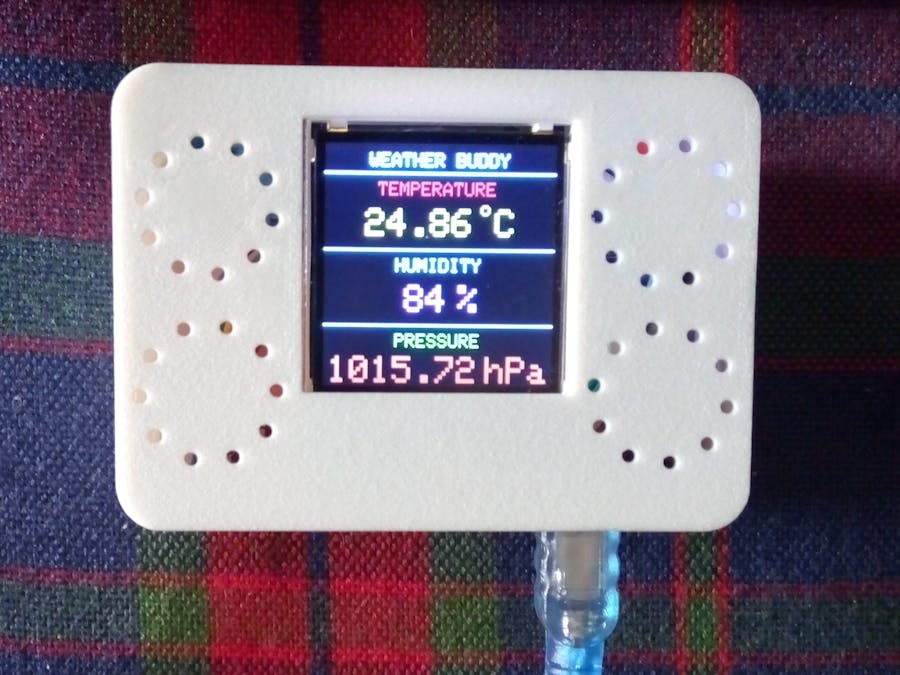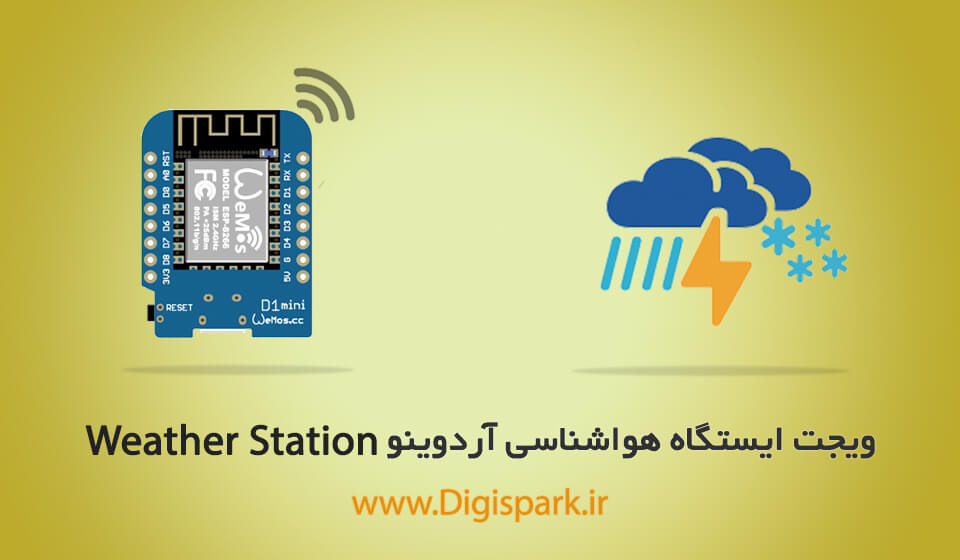

Once you Sign in after your account verification, Create a new channel by clicking the “ New Channel” button.Īfter clicking on “ New Channel,” enter the Name and Description of the data you want to upload on this channel.Įnter the name of your data ‘ Humidity’ in Field1, ‘ Temp’ in Field2, and ‘ Pressure’ in Field3. After clicking on signup, fill in your details.Īfter this, verify your E-mail id and click on continue. In case if you already have an account on ThingSpeak, sign in using your id and password.įor creating your account go to Click on Sing up if you don’t have an account and if you already have an account, click on sign in. To create a channel on ThingSpeak, first, you need to Sign up on ThingSpeak.

We have also done other interesting projects with ThingSpeak like.
#Arduino weather display update
ThingSpeak takes a minimum of 15 seconds to update your readings. MATLAB allows ThingSpeak users to write and execute MATLAB code to perform preprocessing, visualizations, and analyses.
#Arduino weather display software
ThingSpeak has integrated support from the numerical computing software MATLAB. You can control your devices using ThingSpeak, you can send data to ThingSpeak from your devices, and even you can create instant visualizations of live data, and send alerts using web services like Twitter and Twilio. ThingSpeak is an open data platform that allows you to aggregate, visualize, and analyze live data in the cloud. You can use the below table as a reference for making your connections.
#Arduino weather display serial
The ESP8266 module is also powered by the 3.3V pin of the Arduino and its Tx and Rx pins are connected to Digital pins 2 and 3 of Arduino for serial communication. The BMP180 sensor is powered by the 3.3V pin of Arduino and its data pins SCL (Serial Clock) and SDA (Serial Data) are connected to the A4 and A5 pin of Arduino for I2C communication. The DHT11 sensor is powered by the 5V pin of the Arduino and its data pin is connected to pin 5 for one-wire communication.

The complete circuit for Arduino based IoT Weather Station is shown below. Sending these data to ThingSpeak enables live monitoring from anywhere in the world and we can also view the logged data which will be stored on their website and even graph it over time to analyze it. In our previous project, we already learned to use the DHT11 sensor to monitor temperature and humidity with Arduino, here in this project, we are adding another sensor (BMP180) to make a complete weather station using Arduino. The DHT11 sensor senses the temperature and humidity, while the BMP180 sensor calculates the pressure, and ESP8266 is used for internet connectivity. We will be using the Arduino board along with the DHT11 sensor, BMP180 sensor, and an ESP8266 wifi module.


 0 kommentar(er)
0 kommentar(er)
